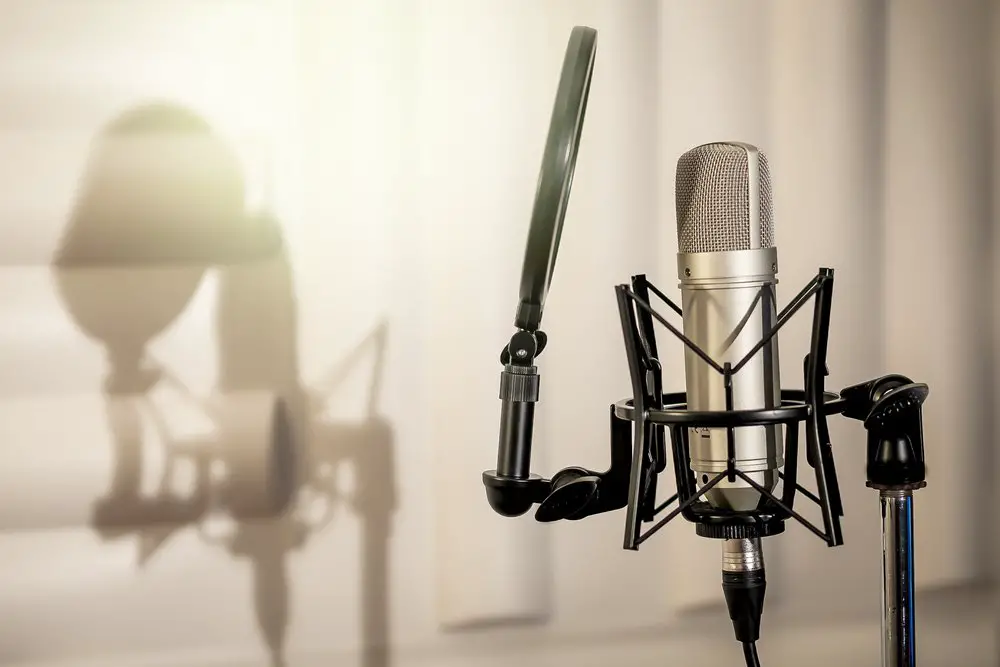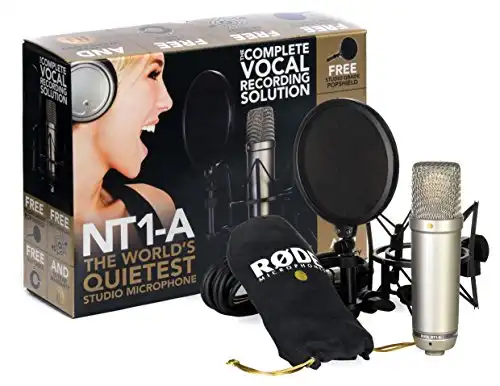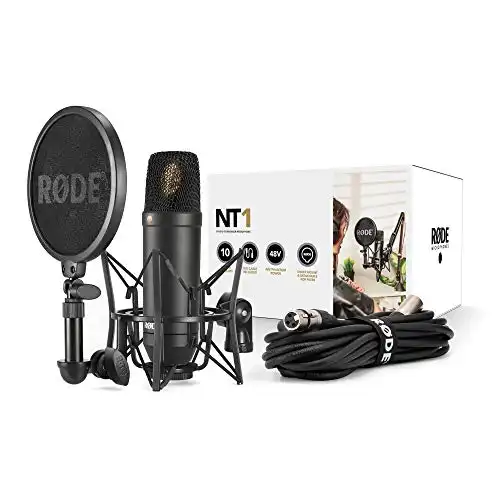While each mic is a good option, there are some key differences to keep in mind. In this article, I will compare their features and help you determine which suits your specific needs.

Table of Contents
Specs
Firstly, let’s look at each
NT1
- Microphone type: Condenser
- Polar pattern: Cardioid
- Frequency Range: 20Hz-20kHz
- Self-noise level: 4.5dBA
- Connectivity: XLR
-
Phantom Power Requirements: P24 and P48
- Accessories: shock mount, pop filter, XLR cable, and dust cover
- Weight: 440g
NT1A
- Microphone type: Condenser
- Polar pattern: Cardioid
- Frequency Range: 20 Hz-20 kHz
- Self-noise level: 5dBA
- Connectivity: 3-pin XLR, which ensures that the audio signal is transferred with minimal interference
-
Phantom Power Requirements: P24 or P48
- Accessories: recording kit with shock mount, pop filter, XLR cable, and dust cover
- Weight: 326g
NT2A
- Microphone type: Condenser
- Polar pattern: Cardioid, Figure 8, Omnidirectional
- Frequency Range: 20Hz – 20kHz
- Self-noise level: 7dBA
- Connectivity: XLR
-
Phantom Power Requirements: P24 and P48
- Accessories: shock mount, pop filter, XLR cable, and dust cover
- Weight: 710
One of the world's quietest studio mics.
Design
The NT1 and NT1A have a black metal finish and a simple design. The NT2, however, is a bit more complex, with multiple controls for adjusting the polar pattern, high-pass filter, and pad.
The NT1 and NT1A are sturdy but not as chunky as the NT2A. It is on the heavier side, but both the mic and its accessories are built to last.
Ease of Use
The
That means they are both relatively easy to use when recording because you don’t have to worry about ideal positioning.
However, the NT2A has three polar patterns (cardioid, omnidirectional, and figure-8), which can also pick up sounds from different angles. You may need to experiment more with the NT2A to determine the best configuration for your needs.
All three mics come with additional accessories, such as a pop filter, shock mount, XLR cable, and dust cover.
Audio Quality
When speaking of audio quality, all three microphones deliver a high-quality sound. But there are slight differences to look out for.
The Rode NT1 is well-regarded for its accuracy, clarity, and detail. It is a quiet microphone with a low self-noise level of 4.5 dBA. While it can be used for almost anything, it shines in vocals and acoustic guitar recordings.
According to online reviews, the NT1A probably has the best audio quality one can get for the price. Furthermore, the
Rode microphones are generally presence-boosted, and these models are no exceptions. However, the Rode NT2A doesn’t bring the edge to the sound as much as the others, and it’s the most pleasant sounding.
In terms of sound, the
However, the NT2A may not be the best at rejecting background noise, which is something to keep in mind.
User experience
There are plenty of reviews for all three microphones, each with flaws. There are also different reviews for the same products because what suits one person or setup might not suit another.
Although Rode NT1 has many positive comments regarding its functionality, one user complained that it didn’t pick up enough bass frequencies, which made his voice sound too thin.
As for the
On the other hand, one person used the
All three
Price and Value for Money
As for price and value, each of these microphones is worth the purchase.
The
The NT1 comes at a lower price point and is probably the most popular. The NT1A is only slightly more expensive.
If you have a bigger budget and want to play around with options and features, NT2A may be for you. But if you only care about having a reliable mic on your hands and don’t need any extra stuff, the NT1 and NT1A are great options too.
Conclusion
In conclusion, the
The
Ultimately, you will have to consider your specific needs before deciding. Whichever model you choose,
Frequently Asked Questions
What type of microphone is the Rode NT1?
The
Is Rode NT1 suitable for recording vocals?
Yes, it is. The NT1 microphone has high sensitivity and low self-noise of only 5dBA, making it perfect for capturing vocals. Condenser microphones with low self-noise also do an excellent job of reducing ambient noise, resulting in clear recordings.
Is the Rode NT1A good for voiceover?
Yes, the
Is the Rode NT1A good for rap?
Yes, the NT1A is a good choice for rap vocals. It’s a popular microphone among hip-hop and rap artists due to its affordability, low self-noise, and good sound quality.
Is the Rode NT1A better than NT1?
The
Does Rode NT2A need phantom power?
Yes. Condenser microphones need phantom power and electricity to work, and the
What is the Rode NT2A used for?
The
It is a versatile tool that both beginners and professionals can use.
What are the main differences between the Rode NT1, NT1A, and NT2A microphones?
The
Additionally, the NT1A and NT2A come with more accessories than the NT1.


